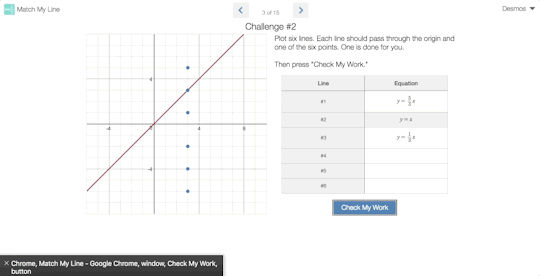The bell has rung, your classmates have settled into their seats, and the
teacher stands at the front of the class next to a chalkboard and overhead
projector, ready to deliver today’s lesson.
“All right, everyone,” she announces while gesturing towards the blank chalkboard, “please solve these equations using your handheld calculators– the ones with the broken displays.”
This assignment may sound outlandish, but students with visual impairments face similar challenges using technology in the math classroom every day. New technologies have the potential to empower students, but without care, they may instead present insurmountable barriers to access.
Our mission at Desmos is to help every student learn math and love learning math. Not some students. Every student. With that in mind, we introduced improvements to the calculator to ensure students who are blind or visually impaired have the same opportunities as their peers to discover the joy of learning math. Thanks to technologies like screen readers (which provide spoken or Braille feedback to mainstream computers, tablets, and phones), people who are blind or low vision have the opportunity to use the exact same programs as their peers. Naturally, it made sense to extend the utility of our existing calculator offerings to include screen reader support.
More recently, we extended this functionality to our activities, modifying them to meet the highest possible standard of accessibility our tools can offer. You can find all the screen-reader friendly activities here, or by visiting teacher.desmos.com and typing “screen reader” or “accessible” into the search bar.
So how did we make this happen? Many of the components of a Desmos activity have built in accessibility, meaning that you can interact with them via the keyboard and a screen reader. We added to this accessibility by adding narrations to graph screens to help students learn about a graph, interact with it, and receive feedback.

In this screen from Match My Line, when a student submits a correct equation, the screen reader tells them the number of lines that have been correctly graphed.
Students can also use the audio trace functionality from the graphing
calculator to learn more about a graph within an activity.
Interested in learning more about Desmos accessibility? Get started at learn.desmos.com/accessibility, then dive deeper by watching our Introduction to the Desmos Graphing Calculator and Accessibility Tools webinar and heading to www.desmos.com/accessibility.
We’d love to hear your feedback! Let us know what you think at
accessibility@desmos.com.
